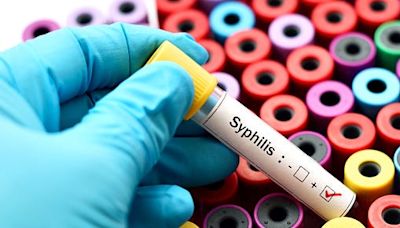Search results
Last Reviewed: July 7, 2023. Source: Division of STD Prevention, National Center for HIV, Viral Hepatitis, STD, and TB Prevention, Centers for Disease Control and Prevention. Information, statistics, and treatment guidelines for sexually transmitted diseases (STD) from CDC's Division of STD Prevention.
Jul 10, 2023 · WHO fact sheet on sexually transmitted diseases (STIs), providing key facts, as a public health issue, infections and transmissions, STIs and women's health, adverse outcomes of pregnancy, HIV, STI syndromes, prevention, vaccination, mother-to-child transmission, WHO response.
Feb 3, 2023 · STI is the most accurate term to describe the condition. What are the types of sexually transmitted infections? The most common types of sexually transmitted infections include: Chlamydia. Genital herpes. Genital warts. Gonorrhea (clap). Hepatitis B. HIV/AIDS. Human papillomavirus (HPV). Pubic lice (crabs). Syphilis. Trichomoniasis (trick).
Diagnosis. Diagnosis of an STD starts with your sexual history and current symptoms. If these suggest that you have an STD, your health care professional may do a physical or pelvic exam to look for signs of infection. Some signs of infection are a rash, warts or discharge.
STDs are infections that are spread from one person to another, usually during vaginal, anal, and oral sex. They’re really common, and lots of people who have them don’t have any symptoms. Without treatment, STDs can lead to serious health problems. But the good news is that getting tested is no big deal, and most STDs are easy to treat.
Feb 17, 2023 · Sexually transmitted diseases (STDs), or sexually transmitted infections (STIs), are infections that are passed from one person to another through sexual contact. They are usually spread during vaginal, oral, or anal sex. But sometimes they can spread through other sexual contact involving the penis, vagina, mouth, or anus.
Dec 18, 2023 · Overview. More. Sexually transmitted infections (STIs) are spread predominantly by unprotected sexual contact. Some STIs can also be transmitted during pregnancy, childbirth and breastfeeding and through infected blood or blood products. STIs have a profound impact on health.

